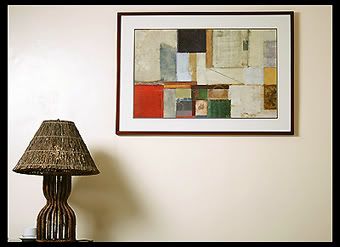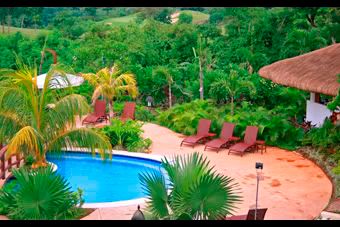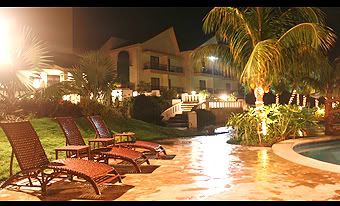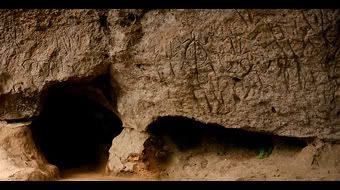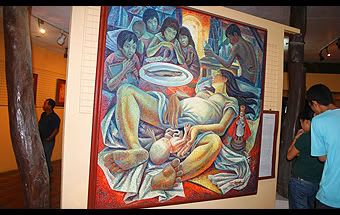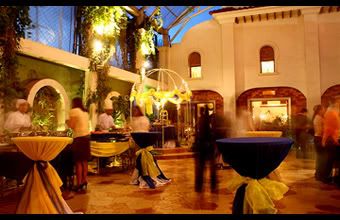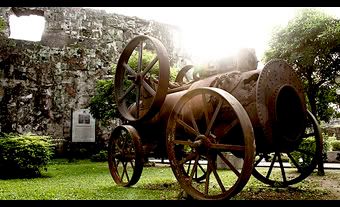The middle of last week was highlighted by a day-long immersion trip at the municipality of Angono in the province of Rizal, the so-called art capital of the Philippines, where scattered were a motley assortment of unheralded visual artistry and heritage sites. We drove to the modish Thunderbird Resorts for a photo shoot, but were more taken by the hotel’s convenient proximity to what no one stuck in Manila might ever discover: a breathtaking view of the lake, beside which were quiet –almost mute– fishing villages; the Petroglyphs Site Museum, where in 1965, National Artist Carlos “Botong” Fransisco stumbled upon a cave with Neolithic (3000 BC) engravings and which is now considered by UNESCO as one of the most endangered sites in the world (very Indiana Jones, archaeologically speaking); and imaginative figure painter Nemesio Miranda’s folkloric Arthouse.
Touring the artist’s atelier and visual gallery, we learned that the place was also a venue for workshops, competitions, and exhibits – legitimizing its moniker as the town’s “School for the Arts”. Then we dined in the evening at the Nemiranda Art Café Grill and Restaurant.
Before the weekend, I struck a brief yet very agreeable E-mail correspondence with Manila’s ultimate cicerone, Carlos Celdran. I asked him where I could find the “best little boutique bookseller” in Manila –the La Solidaridad, that is– because I was planning on spending the whole of Saturday acquiring a few good titles I was never able to unearth in any Powerbooks branch or ‘leading bookstore’. He gladly gave me the directions.
“But since you’re going to be in Manila anyway,” Carlos added, “go to Intramuros and check out the third floor of The Silahis Center (an emporium of arts, crafts, and antiques), where you’ll find Tradewinds Bookstore: great for Filipiniana stuff, and they have no idea how much anything costs.”
He was right. And I was more than thankful. I inserted Tradewinds in my itinerary, and it was where I first went, purchasing three very rare English-language books for a mere one hundred pesos: Lina Flor’s handwritten collection of light, humorous verses, Dilettante (it sells for thirty US dollars in online shops); Wilfrido Ma. Guerrero’s 4 Latest Plays; and a 1976 Regal Publishing copy of Boyhood in Monsoon Country by Maximo Ramos, considered the Dean of Philippine Lower Mythology. If I had had more in my wallet, it would have been a crazy spree. Still, with bigger change than expected, I bought a wooden “wet-and-wear” bracelet and a souvenir shirt with Philippine jeepneys on it. I felt like a tourist, and the feeling may have been accurate. I lingered about the cobblestone streets and quaint Spanish-era influences of the walled fortress long after I had finished two bottles of Sparkle –perhaps an hour just smoking and watching– and then finally stepped into a taxi on my way to the La Solidaridad.
The obscure bookstore, which was a stone’s throw from Robinson’s Galleria mall and located at the corner of Padre Faura and Adriatico streets, was better than advertised. That’s because it has never been advertised at all. The books were indeed expensive, although not more than what they should cost. I spent the rest of the afternoon in the maddened adventure of scouring the shelves, despite the realization that I was going to miss the grand Dunlop anniversary in Manila Hotel for which I wrote a painstaking script. But I only cared about that a little bit. A pretty curly-haired Caucasian, maybe an exchange student, joined me as she hunted for a couple of Penguin classics. We kept on sidestepping each other, muttering half-politely, "Oops, excuse me!" and "Oops, sorry!"
Thunderbird Resorts in Angono, Rizal.
A beautifully-lit evening.
Botong Fransisco's discovery: Neolithic carvings.
Nemesio Miranda's Arthouse.
Plaza Ibarra.
Intramuros, one of the most famous attractions in the Philippines.
The walled fortress.
